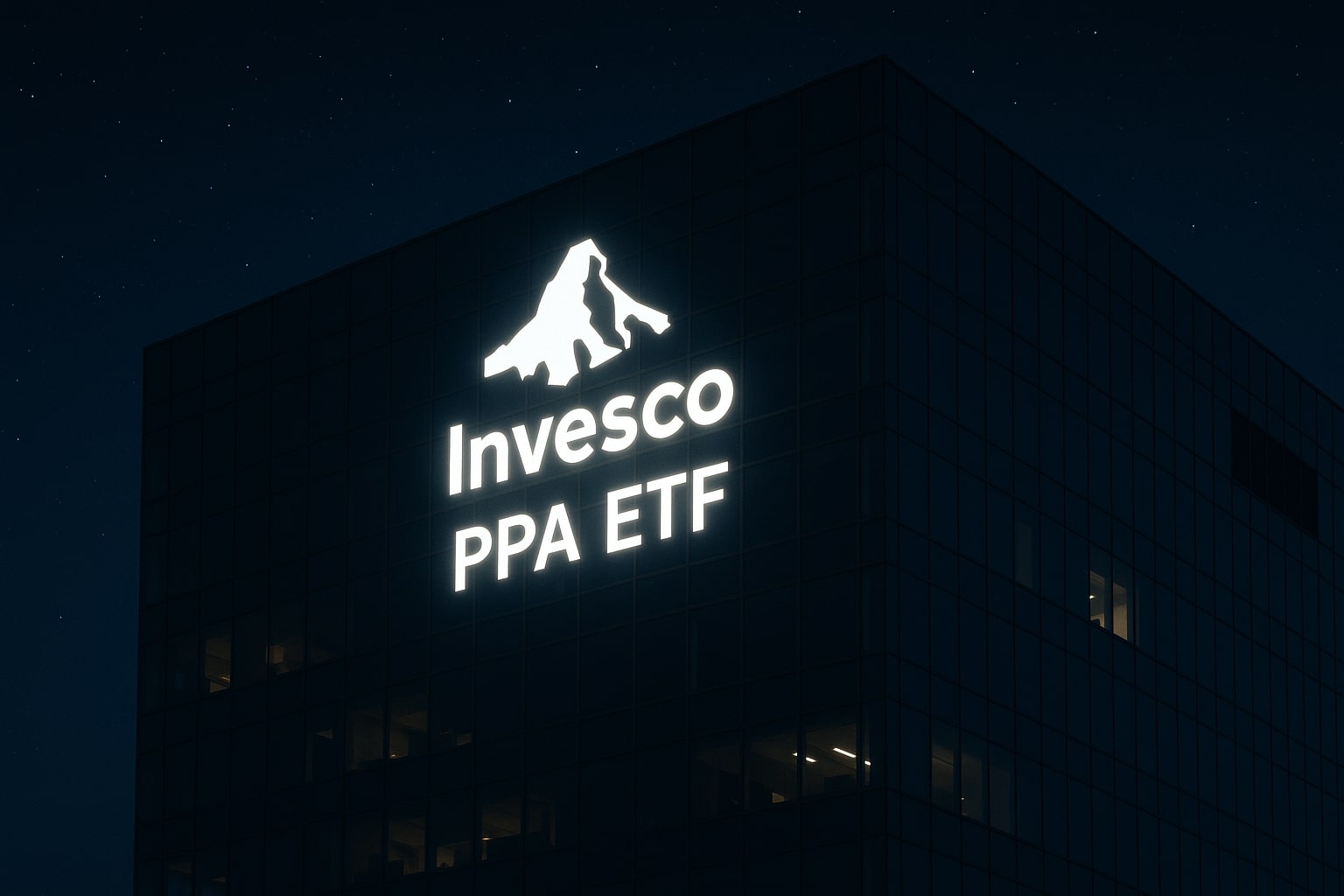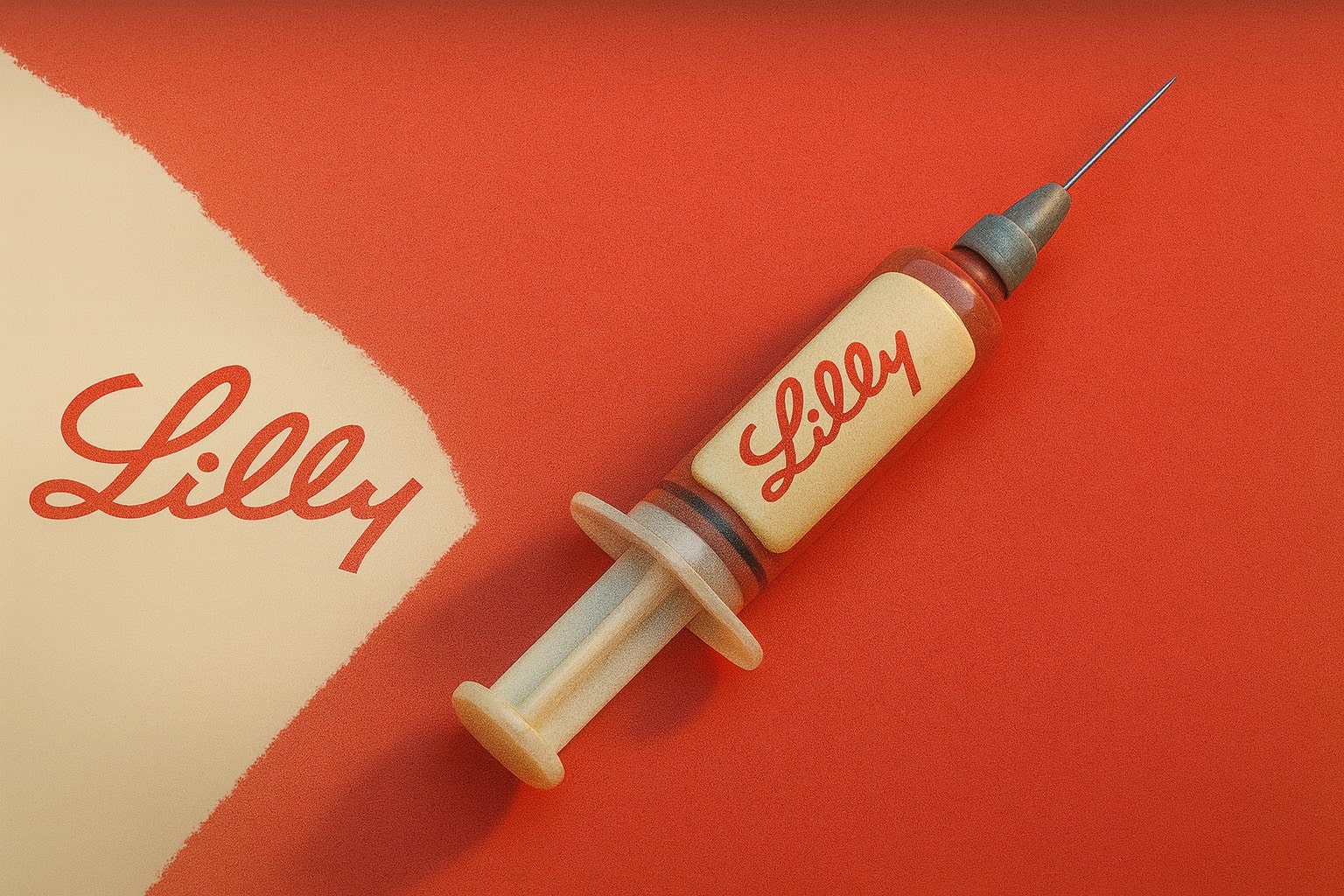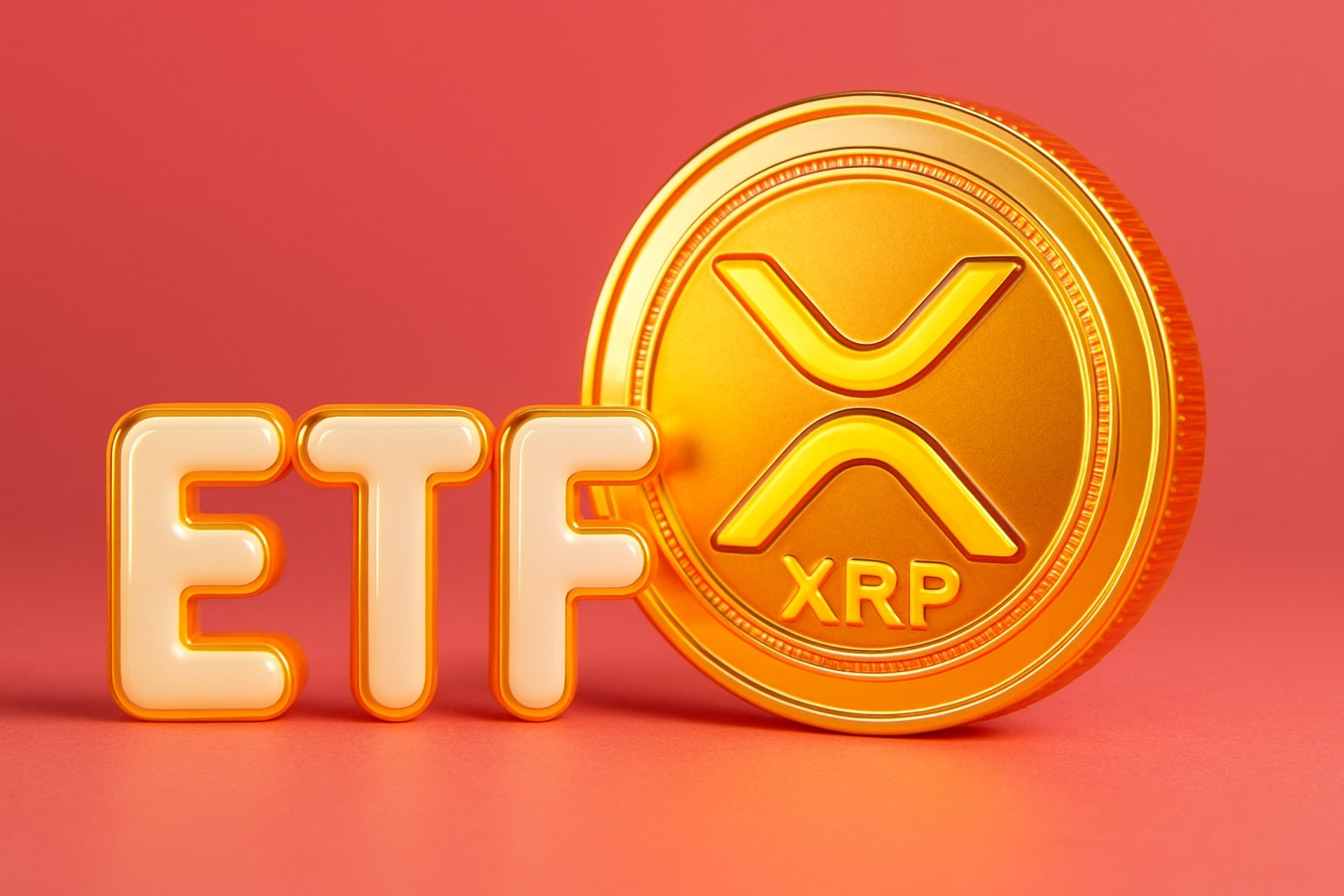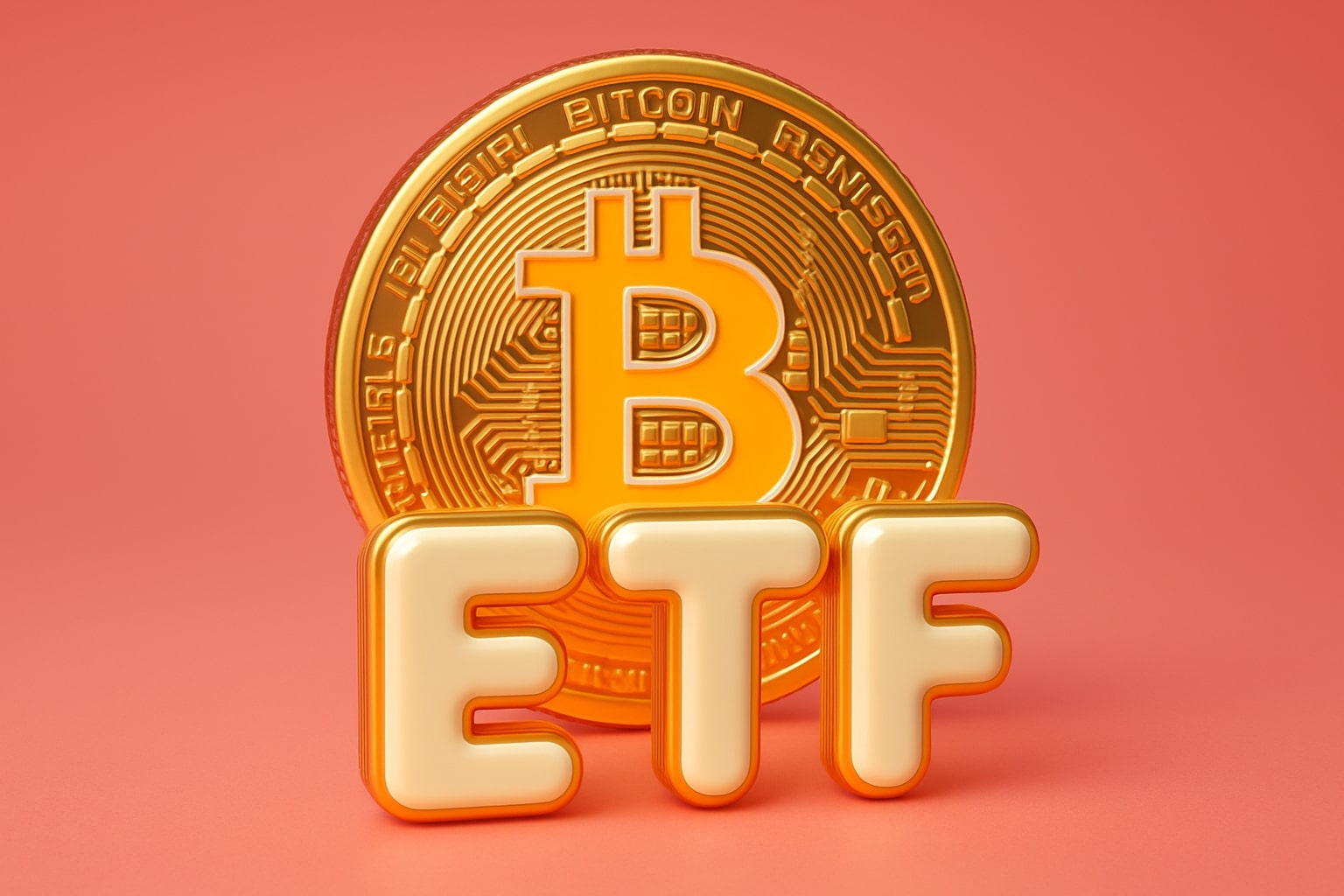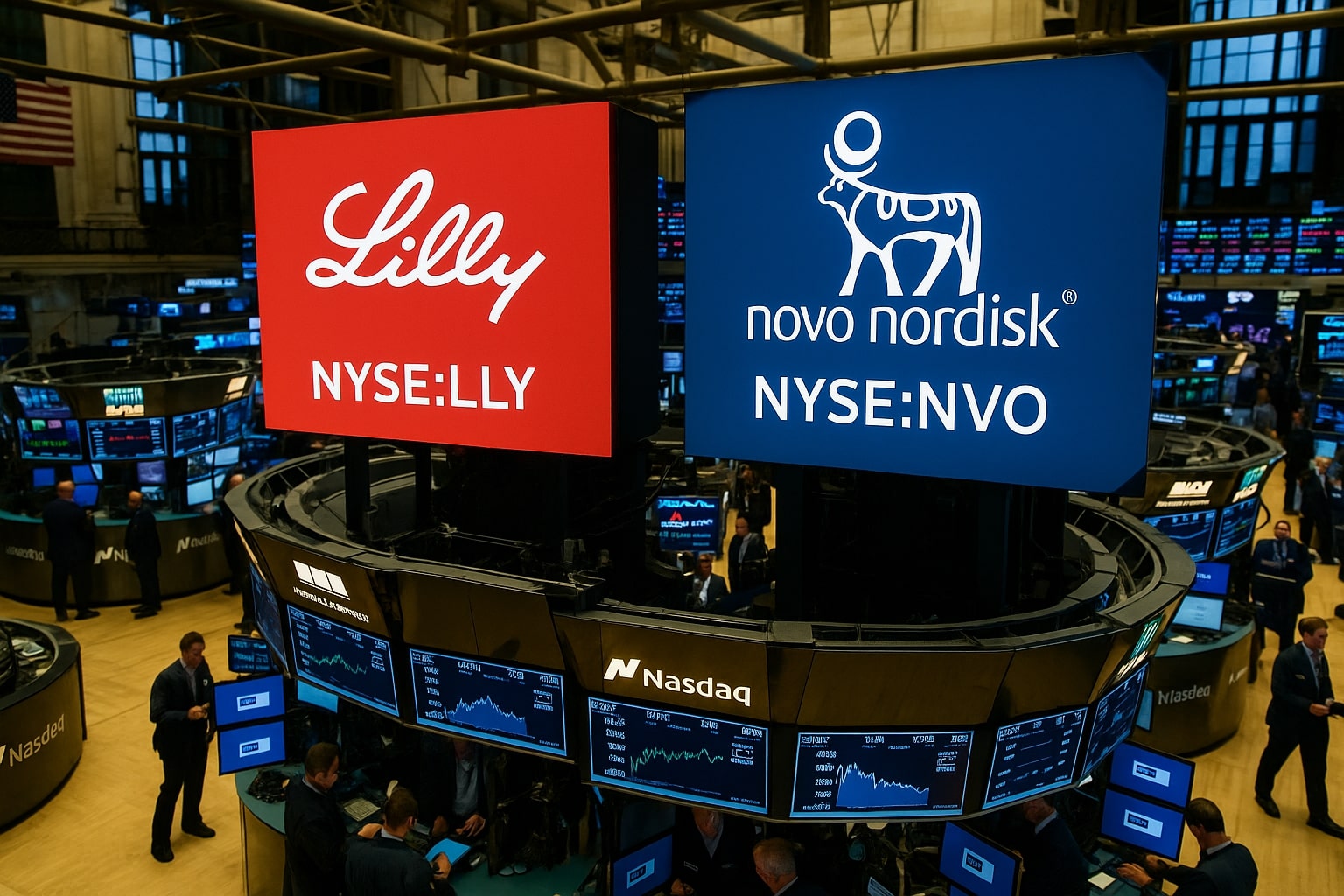
Eli Lilly Stock (LLY) vs Novo Nordisk (NVO): Which Pharma Giant Offers the Better Bet?
LLY rides tirzepatide to record sales, but at a premium valuation. NVO, after a 60% sell-off, trades cheap despite 20% growth and 84% margins | That's TradingNEWS
Eli Lilly (NYSE:LLY) Versus Novo Nordisk (NYSE:NVO): The GLP-1 Heavyweights Face Diverging Valuations
Eli Lilly NYSE:LLY is holding around $731, with a market cap near $656 billion, while Novo Nordisk NYSE:NVO has slumped to $56 per share, cutting its market value to roughly $241 billion after a sharp sell-off. The two companies dominate the obesity and diabetes drug space, but markets are pricing them very differently despite similar fundamentals. Lilly trades at a forward P/E of 32 and P/S ratio of 12.4, while Novo sits at a far cheaper 14x forward earnings and EV/EBITDA of 10.4x, creating a valuation gap investors cannot ignore.
GLP-1 Franchise Power: Tirzepatide Versus Semaglutide
Lilly’s tirzepatide, branded as Mounjaro for diabetes and Zepbound for obesity, is rewriting pharmaceutical history. In Q2 2025, tirzepatide sales reached $8.6 billion, with Mounjaro contributing $5.2 billion and Zepbound $3.4 billion, representing more than 55% of LLY’s quarterly revenue. Novo Nordisk counters with semaglutide—Ozempic and Wegovy—which together generated about $8 billion in Q2 revenue. While Lilly’s dual-agonist mechanism delivers ~20% weight reduction, Novo’s semaglutide averages closer to 15%, though Wegovy’s cardiovascular outcomes and expanding approvals keep it highly competitive. The FDA has already cleared Wegovy in 35+ countries, giving Novo entrenched global penetration that offsets Lilly’s U.S.-driven momentum.
Oral Obesity Pills: Orforglipron Against Oral Semaglutide
The next leg of growth hinges on orals. Lilly’s orforglipron showed 12.4% weight loss at 72 weeks, slightly behind Novo’s oral semaglutide at 15.1%, but Lilly’s pill has a crucial edge: no food or water restrictions, unlike Novo’s semaglutide which requires fasting before dosing. Orforglipron is also a small molecule, cheaper to manufacture at scale, while semaglutide is a peptide with higher production costs. Analysts peg orforglipron’s peak revenue at $15–20 billion annually, while Novo’s oral semaglutide could expand its Wegovy/Ozempic franchise toward $25–30 billion in combined yearly sales. This oral race may decide which company cements long-term dominance in the GLP-1 era.
Financial Performance: LLY Outpaces but Trades at a Premium
Lilly’s Q2 2025 revenue hit $15.56 billion, up 38% year-over-year, with net income surging to $5.68 billion. Diluted EPS for the trailing twelve months stands at $15.30, with 2025 guidance projecting $22.83 EPS and revenue above $61 billion. Gross margins are 85%, operating margin 46%, and profit margin 26%, reflecting unmatched scale. Novo, despite being valued at less than half of Lilly, delivered 20% revenue growth in Q2, with $17.5 billion trailing net income and margins equally impressive—84% gross margin and 36% net income margin. Yet the market treats Novo as if it were a slow-growth company, even though EBITDA is forecast to grow 18.6% in 2025, double the sector average.
Drug Pricing Risk: U.S. Politics Versus Global Expansion
President Trump’s revived Most Favored Nation policy threatens to cut U.S. drug prices sharply, potentially slashing Lilly’s U.S. margins, as more than 70% of Zepbound sales are domestic. Lilly is adapting with LillyDirect, where 20% of Zepbound prescriptions are now cash-pay at around $500/month, bypassing insurers. Novo Nordisk, by contrast, has leaned on international expansion, where Wegovy sales grew 125% abroad in H1 2025, insulating it from U.S. policy swings. Novo’s partnerships with platforms like GoodRx, offering semaglutide at $499/month self-pay, mirror Lilly’s DTC strategy, but Novo’s broader international reimbursement base provides more protection if U.S. pricing reforms advance.
Pipeline Diversification Beyond Obesity and Diabetes
Lilly is extending its GLP-1 dominance with retatrutide, a triple agonist that achieved 17.5% weight loss in just 24 weeks, and pipeline bets in oncology and Alzheimer’s. Its breast cancer drug Verzenio just showed survival benefits, boosting its oncology revenues. Novo Nordisk is pushing Amycretin for type 2 diabetes and obesity into Phase 3, and semaglutide Alzheimer’s trials are due September 2025, with a potential $5.5 billion market. Both companies are racing to broaden beyond obesity, but Lilly’s R&D spending surged 23% to $3.3 billion last quarter, compared to Novo cutting R&D by 11% to improve margins. This contrast shows Lilly prioritizing pipeline growth at the cost of free cash flow, while Novo leans on efficiency and existing franchises.
Valuation and Market Mispricing
Lilly trades at 47.8x trailing earnings and a PEG ratio of 1.06, supported by 75% projected EPS growth in 2025. Novo trades at 14x forward earnings and P/CF of 12.5, its five-year valuation trough, even as it grows faster than most peers. To justify its $656B valuation, Lilly must sustain 18% annual revenue growth through 2032; Novo, by contrast, needs only 1% post-2025 growth to justify its $241B capitalization. Conservative DCF models suggest Novo’s fair value is $427B, implying 70% upside, while Lilly already prices in perfection.
Verdict: NYSE:NVO as the Value Play, NYSE:LLY the Growth Premium
Eli Lilly has the superior momentum, with tirzepatide already the best-selling drug globally and orforglipron ready to extend its grip. But NYSE:LLY trades at valuations that leave no margin for policy error, especially under Trump’s aggressive MFN reform. Novo Nordisk NYSE:NVO, battered by a 60% sell-off, is now deeply discounted despite 20% growth, 84% margins, and a dominant obesity franchise. For investors deciding between the two, Lilly is a Hold for existing positions, justified by pipeline depth and blockbuster growth, while Novo Nordisk represents a Buy, offering superior risk-reward with realistic upside toward a $500B market cap and $110/share over the next 12–18 months.
That's TradingNEWS
Read More
-
PPA ETF at $154: Can This Defense ETF Keep Beating ITA and SPY?
14.12.2025 · TradingNEWS ArchiveStocks
-
XRP ETFs XRPI and XRPR Pull In $975M While XRP-USD Fights To Hold $2
14.12.2025 · TradingNEWS ArchiveCrypto
-
Natural Gas Price Forecast: NG=F Hits $4.11 As Warm Winter Outlook Puts $3.913 Support At Risk
14.12.2025 · TradingNEWS ArchiveCommodities
-
USD/JPY Price Forecast - Dollar to Yen Can BoJ’s 0.75% Shock Break The 155–158 Range?
14.12.2025 · TradingNEWS ArchiveForex














